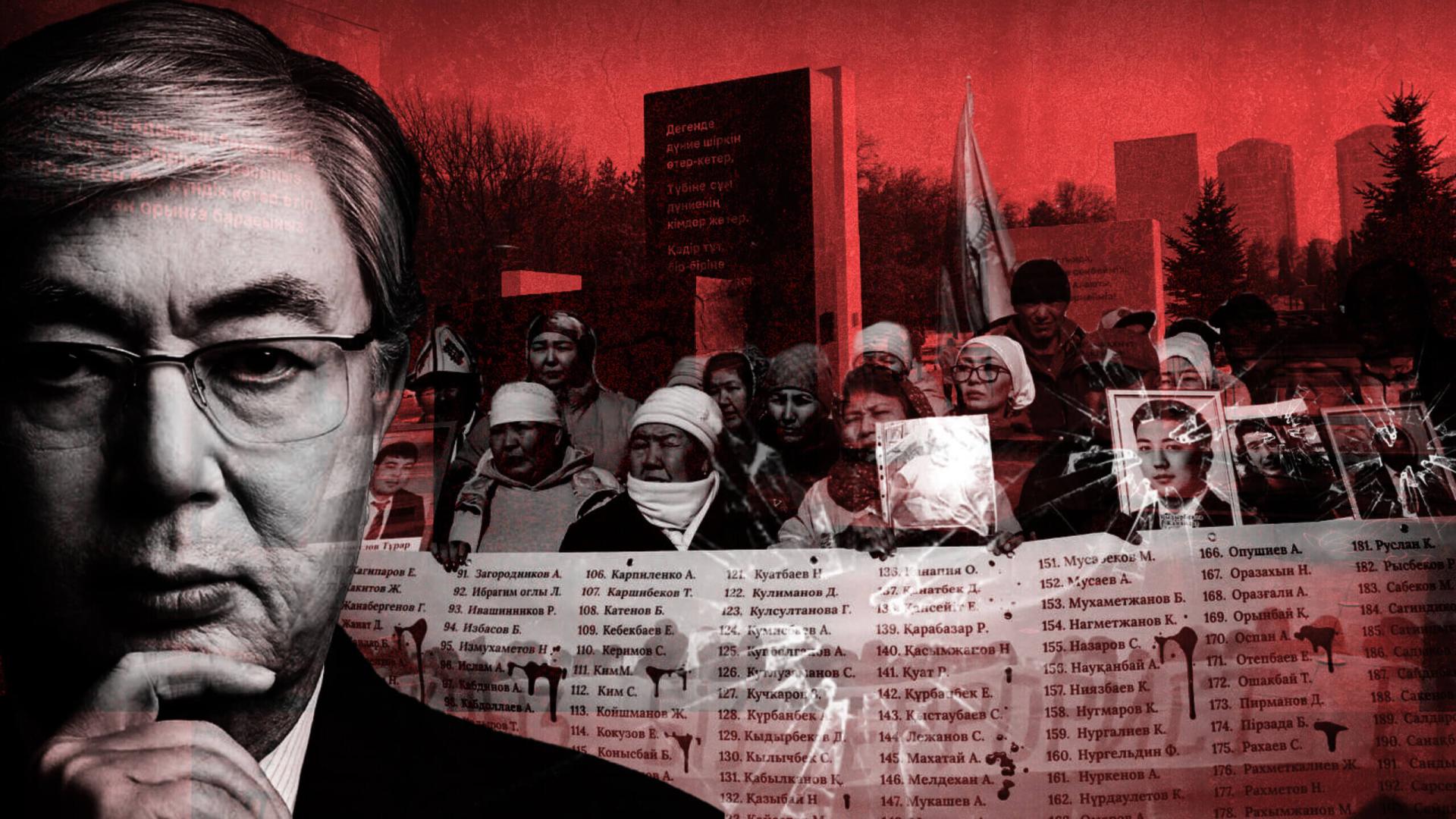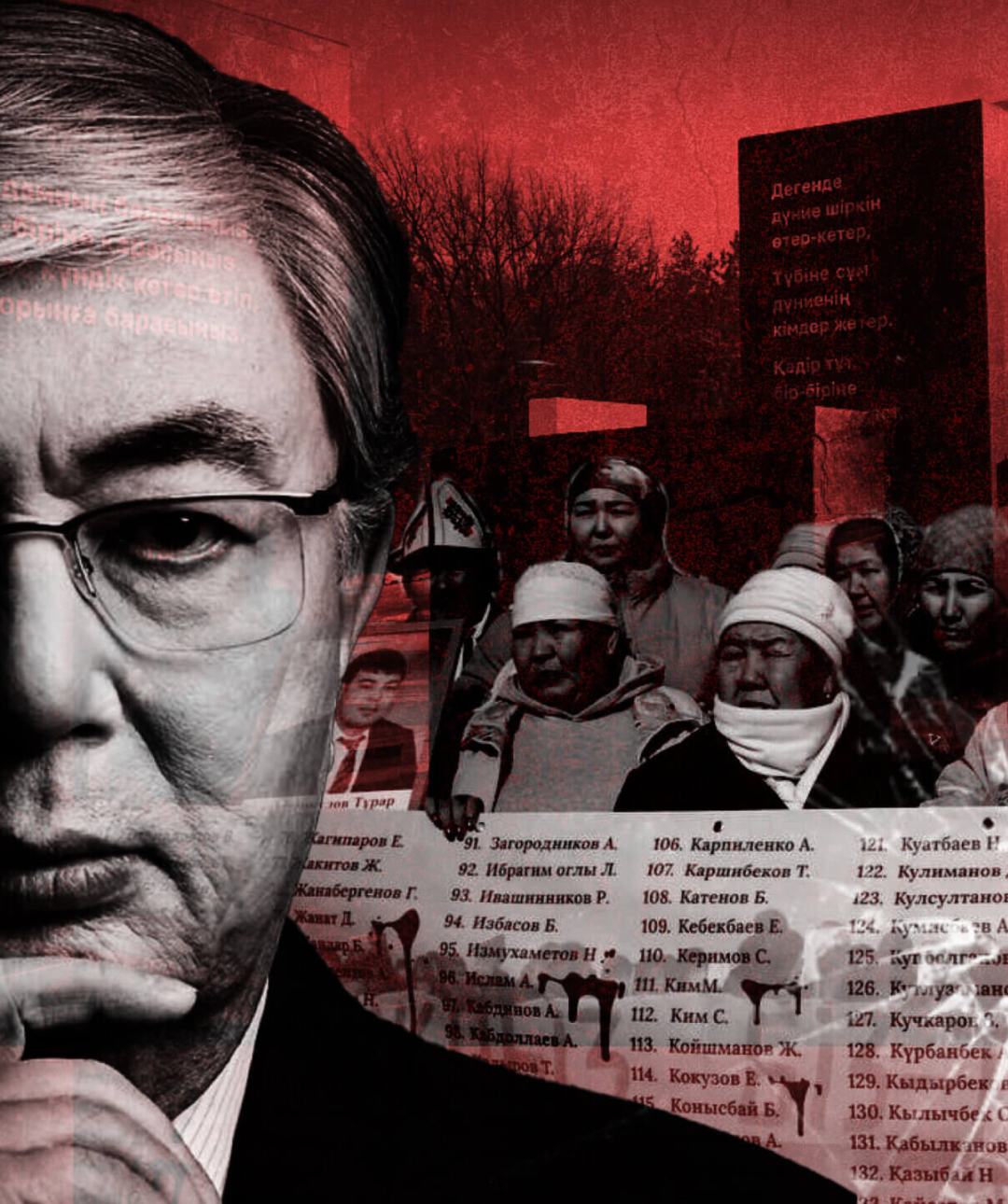

In January 2022, citizens in the Central Asian country of Kazakhstan experienced the most violent event in their recent history. What began as a peaceful protest ended with the country’s authoritarian ruler, Kassym-Jomart Tokayev, issuing a shoot-to-kill order. Police gunned down 238 people. Since then, the victims haven’t been truly honored. Tokayev used the events of what became known as “Bloody January” to consolidate power. He twisted the narrative to paint innocent civilians as terrorists — all to avoid his own accountability.
The second anniversary of the protests has just passed. It’s time to honor the dead and their stories and refuse to be complicit in the regime’s denial of its atrocities.
Many outside of Kazakhstan are likely unfamiliar with Bloody January. It started on Jan. 2, with people in the western town of Zhanaozen protesting unfair fuel prices. The protests spread throughout Kazakhstan, turning into demonstrations against Tokayev and his repressive predecessor, Nursultan Nazarbayev. Once police started shooting tear gas into crowds, some rallies became violent.
With police failing to contain the growing protests, Tokayev called in the CSTO, a military alliance of certain former Soviet states, to protect him from a coup attempt by “foreign terrorists.” The CSTO didn’t directly confront protestors; instead, they guarded facilities and freed Kazakh state security forces to act (though some unofficial sources say the CSTO played a more violent role). Meanwhile, Tokayev dismissed calls to negotiate with the protesters.
Instead, he issued a shoot-to-kill order.
Many of the dead were mere civilians, like 19-year-old Abdukhapar Orazgali, an accomplished athlete who wanted nothing more than to represent Kazakhstan on the global stage. Police killed him during the protests, and his older brother found him in the morgue a few days later. All his family wants is that the regime doesn’t brand him a terrorist as it did so many protesters.
Thirty-year-old Ruslanbek Zhubanazarov was also among the dead. During the demonstrations, he and a group of unarmed people were retreating toward a cluster of buildings when police shot him. His family tried to retrieve his body from the morgue. Authorities refused to let them, claiming he was a terrorist and that his body couldn’t be returned. His acquaintances denied this allegation.
The protests ended on Jan. 7, the CSTO withdrew, and Tokayev consolidated power. Before resigning as president, his predecessor, Nursultan Nazarbayev, passed laws granting himself near-unlimited authority. In the months after Bloody January, Tokayev stripped Nazarbayev of his influence, called for snap-elections, and secured a second term as president.
One year after the protests, Tokayev created a monument to Bloody January’s victims. Yet at the opening ceremony, he spoke very little about the dead. Aside from a minute of silence and brief references to innocents slain by “bandits,” Tokayev devoted the ceremony to praising his own regime’s actions during the protest and framing the tragedy as a victory over a coup attempt.
Tokayev’s reticence about the victims might be interpreted as respect for their privacy. But he showed absolutely no respect to the victims’ families by withholding news of the opening ceremony, even prohibiting them from attending.
These families had been the ones who’d advocated for the monument to be built. They wanted it to bear the names of the dead so they could bring the victims’ children and show them their parents’ names etched in stone.
The monument omitted all the victims’ names. The dead can’t truly be honored if the regime refuses to name them in stone.
Kazakhstan’s official website now lists the victims’ names, including those of alleged “terrorists” like Ruslanbek Zhubanazarov. Yet the regime refuses to publicize the circumstances of their deaths, even forbidding victims’ relatives from publicly accusing perpetrators.
Tokayev’s refusal to name the victims on the monument and to publicize their causes of death lets him evade accountability for his “shoot-to-kill” order. By omitting victims’ names from the monument, he can continue casting them as supposedly depraved terrorists. By refusing to publicize the circumstances of their deaths, he can claim that his brutal order caused police to shoot only bandits—that the innocents were slain by insurgents.
Bloody January’s second anniversary has come and gone. Tokayev’s regime hasn’t truly honored the victims, and recent state-sponsored documentaries still portray the event as a coup attempt.
It’s up to us to honor the victims in all their humanity. It’s up to us to remember the names of those who died, learn the stories of their lives, and commemorate the tragedy of their deaths, even by just lighting a candle.
We must also raise awareness. Tokayev is trying to fool the West into perceiving Kazakhstan as a rapidly democratizing nation, even as Kazakhstan grows increasingly authoritarian. If Tokayev’s narrative isn’t countered, we risk being complicit in propping up his regime and perpetuating its human rights violations.
And maybe in raising awareness of the Bloody January tragedy, we can promote a vision of a Kazakhstan in which a 19-year-old athlete, who wants nothing more than to represent Kazakhstan on the world stage, can live to fulfill his dreams.
Hit enter to search or ESC to close